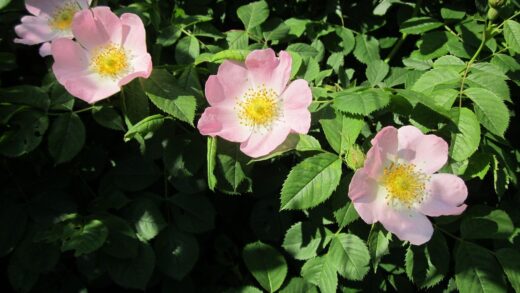Moss rose, a vibrant and resilient annual, is celebrated for its stunning, rose-like flowers that thrive in the heat and sun of summer. Its succulent foliage and low-growing, spreading habit make it an exceptional choice for ground cover, rock gardens, container plantings, and the edges of garden beds where other plants might struggle. This plant’s remarkable drought tolerance is a key feature, stemming from its ability to store water in its fleshy leaves, which significantly reduces its need for frequent irrigation. Successfully cultivating moss rose involves understanding its fundamental requirements for sunlight, soil, and moisture, ensuring a prolific display of colour from early summer until the first frost.
Understanding the basics of moss rose
Moss rose is a member of the Portulacaceae family, a group known for its succulent characteristics. This succulent nature is the primary reason for its incredible resilience in hot, dry conditions, as the plant efficiently stores water within its thick, fleshy leaves. This adaptation allows it to thrive in environments where many other flowering plants would quickly wilt and perish. Understanding this fundamental trait is crucial for its care, as it dictates the most common mistakes gardeners make, particularly overwatering. The plant’s structure is designed for water conservation, not for constant moisture.
The flowers of the moss rose are its main attraction, and they exhibit a fascinating behaviour known as nyctinasty. This means that the blooms typically open in the morning when the sun is bright and close up in the late afternoon, on cloudy days, or at night. This response to light is an energy-saving mechanism for the plant. Modern cultivars have been developed to keep their flowers open for longer periods and on overcast days, but the classic behaviour is a hallmark of the species. This daily cycle of opening and closing adds a dynamic element to the garden.
The growth habit of moss rose is typically low and spreading, forming a dense mat of foliage and flowers. This makes it an ideal plant for filling in gaps, covering bare ground, or cascading over the edges of walls and containers. Its stems are somewhat fragile but root easily where they touch the soil, contributing to its ability to spread and form a continuous carpet of colour. This natural tendency to spread should be considered when planning its placement in the garden, allowing it adequate space to grow without crowding out more delicate neighbours.
Despite its delicate appearance, moss rose is a tough and adaptable plant that asks for very little in return for its brilliant floral display. Its minimal care requirements make it a perfect choice for beginner gardeners or for those looking to create a low-maintenance, high-impact garden space. The key is to replicate its native, sun-drenched, and dry conditions as closely as possible. By providing these simple elements, you can ensure a season-long spectacle of vibrant, cheerful blooms that are as durable as they are beautiful.
More articles on this topic
Soil and location requirements
The single most critical factor for the success of moss rose is selecting a location that receives full, direct sunlight for at least six to eight hours per day. This plant is a true sun-worshipper and its flowering performance is directly tied to the amount of light it receives. In locations with partial shade, the plant will become leggy, with sparse foliage and significantly fewer flowers. The blooms it does produce in lower light conditions may also fail to open fully, diminishing the overall visual impact. Therefore, choose the sunniest, warmest spot in your garden for planting.
When it comes to soil, moss rose is not demanding about fertility but is very particular about drainage. It thrives in sandy, well-draining soil and can tolerate poor, rocky, or gravelly conditions where many other plants would fail. Heavy clay soils that retain moisture are the primary enemy of this plant, as they can quickly lead to root rot and fungal diseases. If your garden has heavy soil, you must amend it to improve its drainage before planting moss rose. Incorporating sand, perlite, or fine gravel will help create the loose, porous structure it needs.
The ideal soil pH for moss rose is slightly acidic to neutral, generally ranging from 5.5 to 7.0. However, the plant is quite adaptable and will typically perform well in most average garden soils as long as the drainage is excellent. It is more important to focus on the physical structure of the soil rather than its exact chemical composition. Before planting, work the soil to a depth of about six inches to loosen it, which will further aid in drainage and allow the roots to establish themselves easily.
For container gardening, the same principles apply with even greater emphasis on drainage. Use a high-quality cactus or succulent potting mix, or create your own by blending standard potting soil with equal parts sand or perlite. Ensure the container has ample drainage holes at the bottom to allow excess water to escape freely. Terracotta or unglazed ceramic pots are an excellent choice as their porous nature allows soil to dry out more quickly, which is highly beneficial for a drought-tolerant plant like moss rose.
More articles on this topic
Watering and feeding essentials
Proper watering is a delicate balance when caring for moss rose, as its succulent nature makes it highly susceptible to overwatering. The general rule is to water deeply but infrequently, allowing the soil to dry out completely between watering sessions. For newly planted specimens, you should water them more regularly to help their root systems become established. Once the plants are mature and actively growing, you can significantly reduce the frequency. Checking the top inch or two of soil is the best method; if it feels dry to the touch, it is time to water.
During periods of extreme heat and drought, you may need to increase your watering frequency, especially for plants in containers, which tend to dry out much faster than those in garden beds. However, even under these conditions, it is crucial to avoid a constantly moist environment. Always water the plants at the base, avoiding the foliage and flowers as much as possible. Wetting the leaves, especially in humid weather, can create a favourable environment for fungal diseases such as powdery mildew or botrytis to develop.
Moss rose has very low nutrient requirements and generally does not need supplemental fertilization to thrive, particularly if planted in reasonably good soil. It is well-adapted to growing in poor, lean soils, and excessive feeding can often do more harm than good. Over-fertilizing, especially with nitrogen-rich formulas, tends to promote lush, excessive foliage growth at the expense of flower production. This results in a green, leafy plant with very few of the vibrant blooms you are hoping for.
If your soil is extremely poor or if your plants are in containers where nutrients can leach out over time, a light feeding may be beneficial. If you choose to fertilize, use a balanced, water-soluble fertilizer diluted to half-strength. Apply this very sparingly, perhaps once early in the growing season to give the plants a gentle boost. Alternatively, incorporating a small amount of compost or a slow-release, low-analysis granular fertilizer into the soil at planting time is often sufficient to support the plant throughout the entire season.
Managing flowering and deadheading
To ensure a continuous and abundant display of flowers throughout the summer, the practice of deadheading is highly beneficial for moss rose. Deadheading is the simple process of removing spent or faded flowers before they have a chance to produce seeds. By doing this, you redirect the plant’s energy away from seed production and back into creating new buds and blooms. This simple maintenance task can dramatically increase the number and duration of flowers your plants will produce.
The process of deadheading moss rose is straightforward. You can simply pinch or snip off the old flower heads with your fingers or a pair of small pruning shears. Follow the flower stem down to the next set of leaves and make your cut there. While it can be a meticulous task, especially on a plant with so many small blooms, even sporadic deadheading can make a noticeable difference. It not only encourages more flowers but also helps to keep the plant looking tidy and well-groomed throughout the season.
If your moss rose plants start to look leggy or sparse in the middle of summer, a more aggressive form of pruning can be employed to rejuvenate them. This involves cutting the plants back by about half their height. This “haircut” will stimulate the growth of new, bushier side shoots from the base of the plant, resulting in a fuller, more compact shape and a fresh flush of blooms in the subsequent weeks. This is a particularly effective technique for revitalizing plants in hanging baskets or containers that may have become stretched and untidy.
It is also important to note that moss rose is a self-seeding annual. If you allow some of the last flowers of the season to mature and form seed pods, they will likely drop seeds that may germinate and grow the following spring, provided the winter is not too harsh. While this can be a welcome surprise, the resulting plants may not be true to the parent variety, especially if you have planted hybrid cultivars. If you want to maintain specific colours or flower forms, it is better to collect seeds manually or purchase new ones each year.
Common challenges and solutions
One of the most prevalent issues when growing moss rose is root rot, which is almost always a direct consequence of overwatering or poorly draining soil. The symptoms include yellowing leaves, mushy stems at the base, and a general lack of vigour. To prevent this, ensure your planting site has excellent drainage and always allow the soil to dry out between waterings. If you suspect root rot, you must reduce watering immediately and, in severe cases, it may be necessary to gently dig up the plant, trim away any blackened, mushy roots, and replant it in a drier location or a container with fresh, well-draining soil.
Fungal diseases such as botrytis (grey mould) and powdery mildew can occasionally affect moss rose, particularly in humid or damp weather conditions. These diseases manifest as a grey, fuzzy coating or white, dusty spots on the leaves, stems, and flowers. Good air circulation is key to prevention. Avoid overcrowding your plants and water at the base to keep the foliage dry. If an infection occurs, remove and destroy the affected parts of the plant immediately to prevent the disease from spreading. In persistent cases, an application of a suitable fungicide may be required.
Aphids are among the most common insect pests that may trouble moss rose. These tiny, sap-sucking insects often congregate on new growth and flower buds, causing distortion and weakening the plant. A strong jet of water from a hose can often be enough to dislodge a small infestation. For more significant problems, insecticidal soap or neem oil can be applied, ensuring thorough coverage of the undersides of the leaves where aphids tend to hide. These treatments are most effective when applied early in the morning or late in the evening to avoid scorching the foliage in the sun.
Another potential issue is a lack of flowering, which is almost always linked to insufficient sunlight. If your moss rose is producing healthy green foliage but few or no blooms, evaluate its location. It needs a minimum of six hours of direct, intense sunlight each day to set buds and flower profusely. If the current spot is too shady, your only effective solution is to transplant the plants to a sunnier part of the garden. Remember that this plant’s performance is a direct reflection of the amount of sun it receives.
Seasonal care considerations
In the spring, as the last frost date approaches, you can begin preparing for your moss rose. This is the time to start seeds indoors, typically about six to eight weeks before you plan to plant them outside. Starting seeds early gives you a head start on the season and results in earlier blooms. If you are planting directly into the garden, wait until all danger of frost has passed and the soil has had a chance to warm up. Prepare the garden beds by clearing away any weeds and debris and loosening the soil to improve its aeration and drainage.
During the peak of the summer, your main care tasks will revolve around minimal watering and regular deadheading to promote continuous flowering. Monitor the plants for any signs of stress from extreme heat, such as wilting, although they are generally very heat tolerant. This is the period when the plant is at its most vigorous, producing a profusion of colourful blooms. It is also a good time to take cuttings if you wish to propagate new plants, as the warm weather encourages rapid root development.
As autumn approaches and temperatures begin to cool, the growth and flowering of moss rose will naturally start to slow down. You can continue to enjoy the blooms until the first hard frost, which will signal the end of the plant’s life cycle. At this stage, you can choose to collect seeds for next year’s garden. Allow some of the flower heads to dry on the plant, then harvest the small seed capsules. Store the tiny, black seeds in a cool, dry place over the winter.
Once the first frost has killed the plants, it is time for the final cleanup. Remove the dead plant material from your garden beds and containers to prevent any potential diseases or pests from overwintering in the debris. This tidying up prepares the space for the next season’s plantings. If you allowed the plants to self-seed, you can leave the soil relatively undisturbed to increase the chances of volunteer seedlings appearing the following spring. Amending the bed with a light layer of compost after cleanup will help enrich the soil for the next year.


















